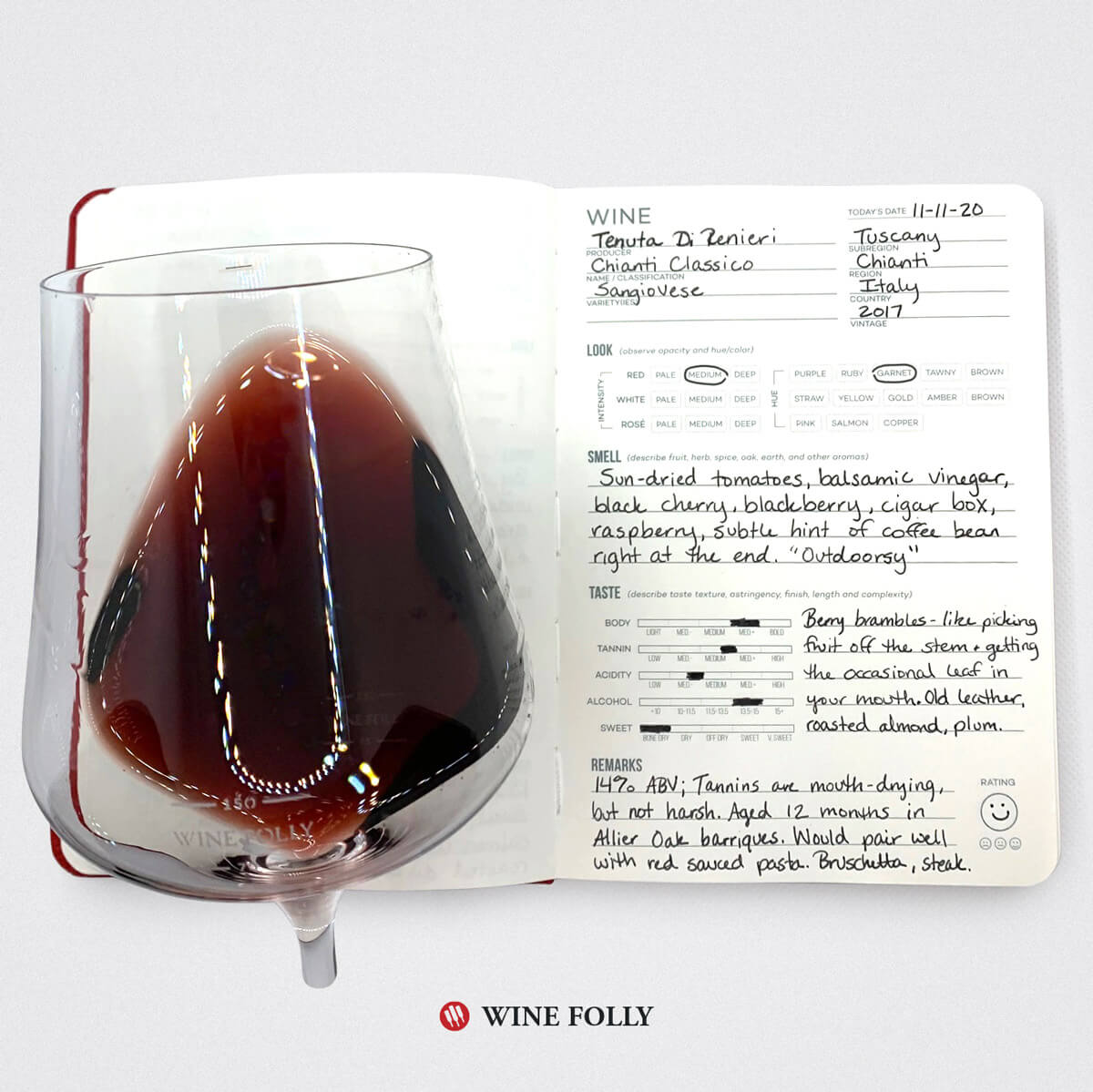Have you ever had a wine that tasted like eating the entire menu of an Italian restaurant all at once? That’s what you’ll get out of this week’s challenge.
What is the Tasting Challenge? The challenge is a way to improve your wine palate each week with 34 wines from 12 countries — The Wine Tasting Challenge.

Wine Tasting Challenge: Chianti – A Glass of Italy
Broaden your horizons and your palate this week with Italy’s most planted grape: Sangiovese. During this third week challenge, you’ll learn that some wines are about way more than just fruit, and can display some seriously savory notes.
Sangiovese is a grape that goes by many regional names: Chianti, Brunello di Montalcino, and Vino Nobile di Montepulciano are just a few of the regional wines that are made with this classic Italian grape.
For the challenge, we went with Tuscany’s famous son Chianti. To be more specific, we tasted a wine from the original Chianti subregion: Chianti Classico.

2017 Tenuta di Renieri Chianti Classico
Look: Medium garnet.
Aromas: Sun-dried tomatoes, balsamic vinegar, black cherry, blackberry, cigar box, raspberry, and a bit of coffee.
On The Palate: Lots of old leather and berry brambles. It’s like shoving dark fruit off the stem of a bush and getting the occasional leaf in your mouth. The tannins are mouth-drying, but not harsh. A little bit of roasted almond and some plum on the finish.
Food Pairing: You can see why the Italians love Chianti with their food. Red sauced pasta is a must with this wine. Would also complement bruschetta well. And, of course, steak.
What We Learned About Chianti Classico
When hunting for Chianti wine you might notice several different types, for instance Chianti Classico, Chianti Montalbano, or Chianti Rufina. So, what does “Classico” mean?
The term “Classico” is given to wines from a particular sub-zone in the Chianti region in Tuscany. As the story goes, the wine was so wildly popular back in the 1700s that the Grand Duke made an edict stating that only wines from certain area could be called “Chianti.”
The edict came out in 1716 which means that Chianti is one of the first wine regions to be officially delimited (other early wine regions include Port, Burgundy, and Tokaji in Hungary).
The “Classico” zone includes these original Chianti villages of Radda, Gaiole, Castellina, and Greve.
If you’re curious to know more, this article on Chianti outlines the sub-zones and aging classifications including Superiore, Riserva, and Gran Selezione.
Last Impressions
As far as getting into Italian red wine, Chianti seems like a great place to start. Not only is it made up of the most important grape in the country’s history, but it comes from a region that’s absolutely steeped in Italian wine history.
Between the history and the flavors, it’s a wine lesson in a glass!
What Sangiovese did you try this week for the #34Wines34Weeks challenge? Did you go with Chianti, or one of Sangiovese’s many other forms? Let us know!
Has the Wine Tasting Challenge inspired you to dive into wine knowledge? Our Wine 101 Education Bundle is rock-solid information for wine fundamentals.
